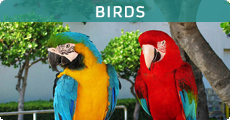American Oystercatcher
 The American Oystercatcher (Haematopus palliatus), occasionally called the American Pied Oystercatcher, is a member of family Haematopodidae. The bird is uniquely marked by its black and white body and a long, thick orange beak. This shorebird is approximately 19 inches (42 - 52 cm) in length.
The American Oystercatcher (Haematopus palliatus), occasionally called the American Pied Oystercatcher, is a member of family Haematopodidae. The bird is uniquely marked by its black and white body and a long, thick orange beak. This shorebird is approximately 19 inches (42 - 52 cm) in length.
The American Oystercatcher is found on the Atlantic coast of North America from New England to northern Florida, where it is also found on the Gulf coast. In the 1800s they became locally extinct in the northeast due to market hunting and egg collecting. After receiving protection under the Migratory Bird Treaty Act, their range extended northward to re-occupy historical habitat in New England.
Oystercatchers are closely tied to coastal habitats. They nest on beaches on coastal islands and feed on marine invertebrates. The large, heavy beak is used to pry open bivalve molluscs. Oystercatchers raise a clutch of two or three eggs. In winter, they are found in flocks along the coast from central New Jersey to the Gulf of Mexico.
Although Oystercatcher populations are low, the species is not protected under the Endangered Species Act. Oystercatchers are listed as a species of concern in several states because of low and declining populations, and threats to coastal habitats. Threats include development and recreational use of nesting beaches.
Identification Tips
- Length: 16 inches
- Large shorebird
- Bright orange, long, thick bill
- Head and breast black
- Dark gray back and wings
- White belly
- Large white patch on inner wing
- White uppertail coverts and dark tail
- Pink legs
Adult
- Yellow eye
- Orange orbital ring
Juvenile
- Eye dark and orbital ring not conspicuous
- Dark end of bill
- Upperparts faintly fringed with buff












